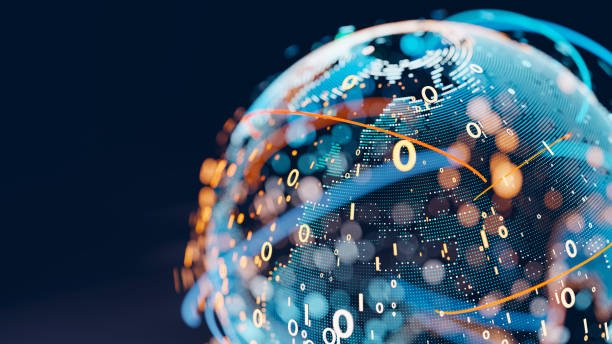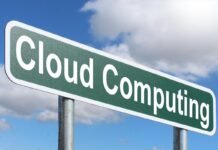
Last Updated on March 13, 2024 by Nasir Hanif
The Internet of Things (IoT) is the expansion of network and cloud abilities to interfaces that are not deemed computers, allowing them to connect with other machines with a minimum or no set of inputs.
As the push toward reducing costs for provision, power consumption, cost-benefit services, and effectiveness of administration and usage (fully automated) of machinery and infrastructures increases, this innovation is economically appealing. On a social level, this has already resulted in creating different technologies that were previously unavailable.
Table of Contents
What is the IoT revolution?
IoT has performed well in this field, providing a new path for such everyday society. Because these gadgets and technology are highly cost-efficient in terms of innovation and are readily available within a reasonable price range, most people are taking advantage of them. They can live a regular life with the help of the Internet of Things. Communication is another crucial part of our lives. The Internet of Things has brought about several new developments that have made it more efficient, pleasant, and dependable. At several signalized junctions across large cities, intelligent sensors and drone gadgets are already regulating traffic.
We are, without a doubt, at the commencement of a technological revolution. The growth of the Internet of Things, or linked things, will match previous technical miracles like the invention of printing, gas turbines, and electrification. Every part of the globe will witness a tremendous economic rebound, from the industrialized to the developing world. The rate at which this conversion will occur is even more impressive. Around 500 million machines were linked to the internet a generation later. There are between 10 and 20 billion people on the planet now. There might be 40 or 50 billion in 5 years.
Furthermore, automobiles are being introduced into marketplaces with pre-installed sensor nodes that may detect approaching significant overcrowding on a map and may advise a different route with less road congestion. As a result, IoT has a wide range of applications in life and science, as you can see on RemoteDBA.com. One can assume that the Internet of Things has a lot of potential in terms of technological advancement and human convenience.
What does all this imply in real life?
In nearly every business, intelligent robots are altering when, when, and how work is done. The Internet of Things (IoT) is an unparalleled technology that links devices, humans, data, and activities. It is now trickling back to basics, influencing how we make our own decisions. Wearable smartwatches (like Fitbits) and IoT healthcare apps, voice companions (Siri and Alexa), intelligent automobiles (Tesla), and home automation are all instances of IoT in action (iRobot). With the growing adoption of IoT, getting into touch with many IoT devices will eventually be inescapable.
What are the challenges faced by IoT?
- Confidentiality, subversion, and denial of service are all security risks. Hacking highly ambitious regularly maintains this threat in the forefront of our thoughts. Subversion and denial of service might have considerably more catastrophic effects than an invasion of confidentiality. Adjusting the antimicrobial mix proportion at a treatment plant or shutting down an atomic power station’s power supply may put an entire city at risk.
- Networking determinism is critical in nearly every application where IoT may be utilized, including process control, safety, industrial, transportation, transport networks, and medical equipment. The usage of the cloud causes a delay of twenty seconds more than at the moment. That’s also fine for most of these cases, but not for safety or other apps that demand a quick, nearly instantaneous response. A 5 delay in a home security system’s triggering might be too soon.
- Surgical instruments, finance, reinsurance, infrastructural equipment, machine tools, and, in particular, pharmaceuticals and new production equipment are all affected by political and legislative concerns. This increases the time and expense of bringing these items to market.
- If not entirely comfortable, consumers were accustomed to monitoring software, sometimes known as a cookie, at an early stage of the web. As there was no explicit legislation prohibiting a website from using cookies to track users’ user activities, many businesses just developed the approach without giving it any thought. In reality, browsers were the first to deal with customer concerns by providing features to limit the usage of cookies and delete them after a browser toolbar.
Compatibility
- Compatibility refers to the capacity to exchange data across various IoT devices and platforms. This data interchange is independent of the operating systems in use. The challenge of compatibility comes as a result of the diversity of technologies and solutions utilized in IoT. Technological, ontological, grammatical, and organizational compatibility are the four layers of compatibility. IoT systems provide various functions to promote interoperability, which facilitates communication among different items in a centralized network.
- Sensory limitations: Basic sensor kinds such as heat, lighting, movement, noise, color, infrared, transducer, granted access, and the x-ray is already reasonably capable. Moreover, recent developments in microelectronic devices, together with solid-phase sensing advancements, will make naked detectors less of a concern in the foreseeable. Getting them more discerning in busy, loud, and complicated situations will be the issue—the use of techniques comparable to flexible reasoning promises to alleviate this problem at some point.
- The primary design problems for an effective IoT architecture in a diverse context are scalability, flexibility, compatibility, and transparency. Cross-domain encounters, inter assimilation with the possibility for efficient and scalable technical assistance, business analytics and warehousing, and consumer apps must all be addressed in the IoT architecture. The architecture must also ramp up the capability and provide awareness and robotics to the program’s IoT devices.
IoT has also demonstrated its relevance and promise in a growing region’s industrialization. It is also regarded as a groundbreaking move in the trading and brokerage firm markets. Nevertheless, information and data safety is a crucial worry and preferred goal and a huge challenge to address. Being the most common cause of security risks and the internet, the Web has provided several entry points for attackers, making information and data vulnerable.
Read More: Is AT&T Fiber Lubbock Internet Worth it?





















